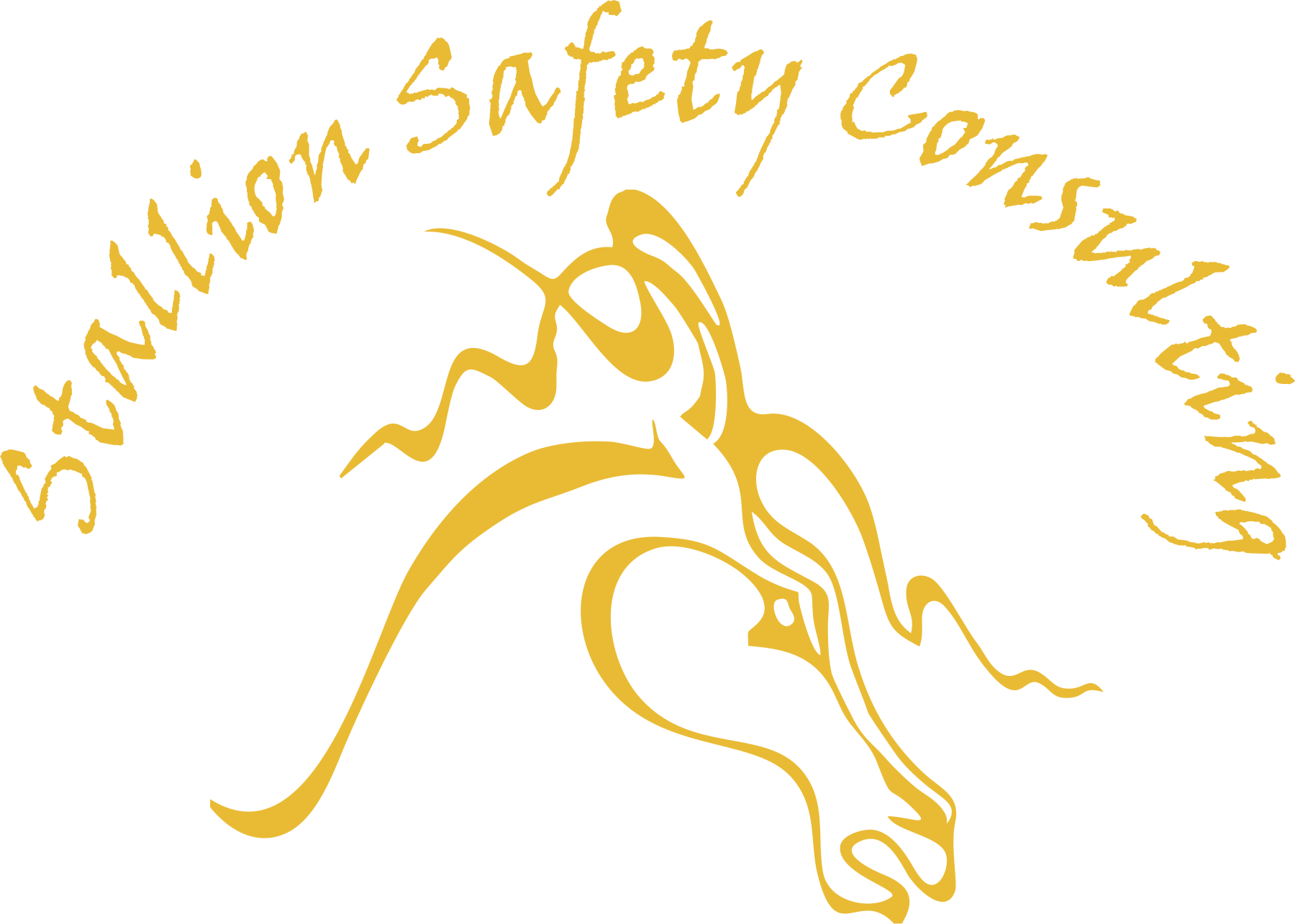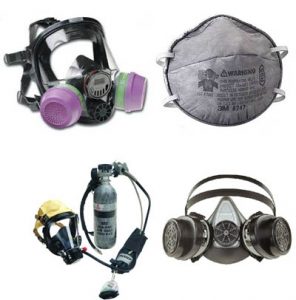|
Respiratory-protective equipment varies in design, application and protective ability but falls into one of the following main groups:
Air SuppliedSelf-Contained Breathing Apparatus (SCBA) SCBAs are air-supplied respirators that require the user to carry the air supply, thus providing unlimited mobility. However, the air supply is limited to the amount of air in the SCBA cylinder, the worker’s physical fitness, and the degree of physical activity. Only use SCBAs that:
Supplied Air Breathing Apparatus (SABA) Supplied Air masks receive air through a supply hose that is connected to compressed breathing air cylinders. These respirators are much lighter than SCBA units and are not restricted to the amount of air the user is able to carry. However, the length of air hose restricts the user’s movement, and the user has to return to a safe atmosphere by retracing the entry route. Only use SABAs that:
Air PurifyingThis type of system consists of a half mask or a full-face mask that receives different cartridges to protect against contaminants in the air. With the air-purifying respirator, the ambient air is passed through a filter or cartridge that removes the particulates, vapours, gases, or other contaminants before they are inhaled. They are limited in use, however, to low concentrations of contaminants, and cannot be used for substances that do not have adequate warning properties. Vapor and Gas Removing Respirators These types of respirators are equipped with cartridges or canisters to remove vapors and gas from the air. Use the vapor and gas removing respirators only: As protection against low concentrations of organic vapors (i.e., our cleaning chemicals) gases, pesticides and paint vapors or mists according to the application specified on the manufacturer’s instructions for the cartridge. Particulate Removing Respirators These types of respirators are equipped with mechanical filters to remove particulate matter, such as dust, form the air. Selecting Respiratory Protective EquipmentVapour, gas, and particulate removing respirators do not protect against oxygen deficiency or acutely toxic gases. Therefore, they must never be used in atmospheres that are immediately dangerous to life and health (IDLH). When working in IDLH concentration of the contaminant or in oxygen deficient atmosphere, workers must wear self-contained breathing apparatus (SCBA) or supplied air breathing apparatus (SABA). When selecting the specific respiratory protective equipment, workers must consider:
Fit Testing TypesQualitative fitting tests Qualitative fitting tests involve exposing the respirator wearer to a test atmosphere containing an easily detectable nontoxic aerosol, vapor, or gas as the test agent. Quantitative fit test This test is designed for tight fitting full-face masks. Quantitative fit-testing requires: a test substance which can be introduced into the air, specialized equipment to measure the airborne concentration of the substances and a trained tester. A quantitative fit test gives a number that is referred to as FF: fit factor (the measure of how well a particular face piece seal against the wearer’s face). A higher FF means the face piece has achieved good contact between the seal and face and will suitably protect the wearer against leakage of harmful contaminants into the mask.
|
Error
Please login and you will add product to your wishlist


 CAD
CAD USD
USD